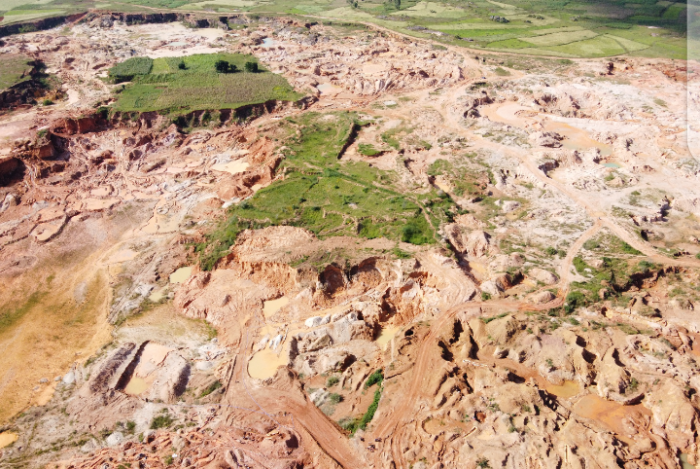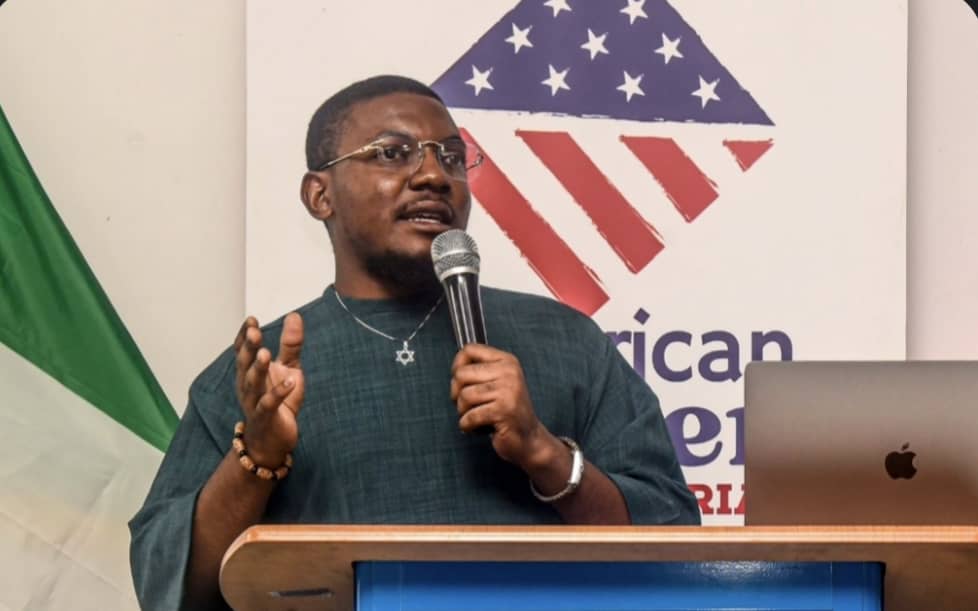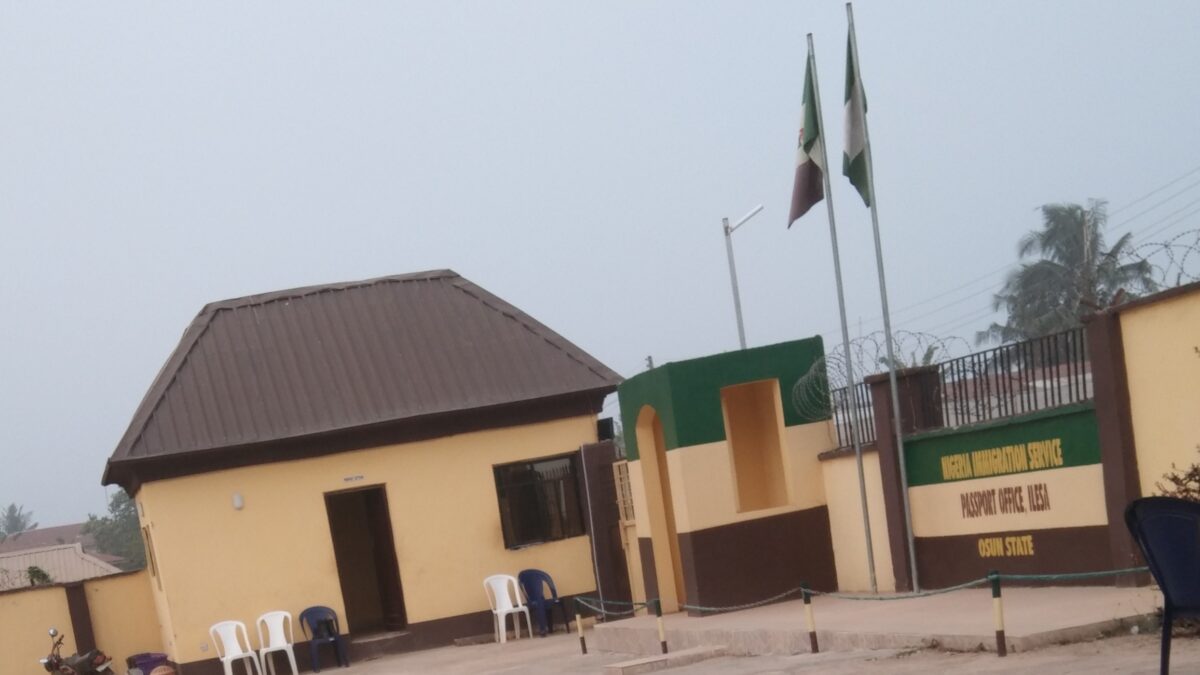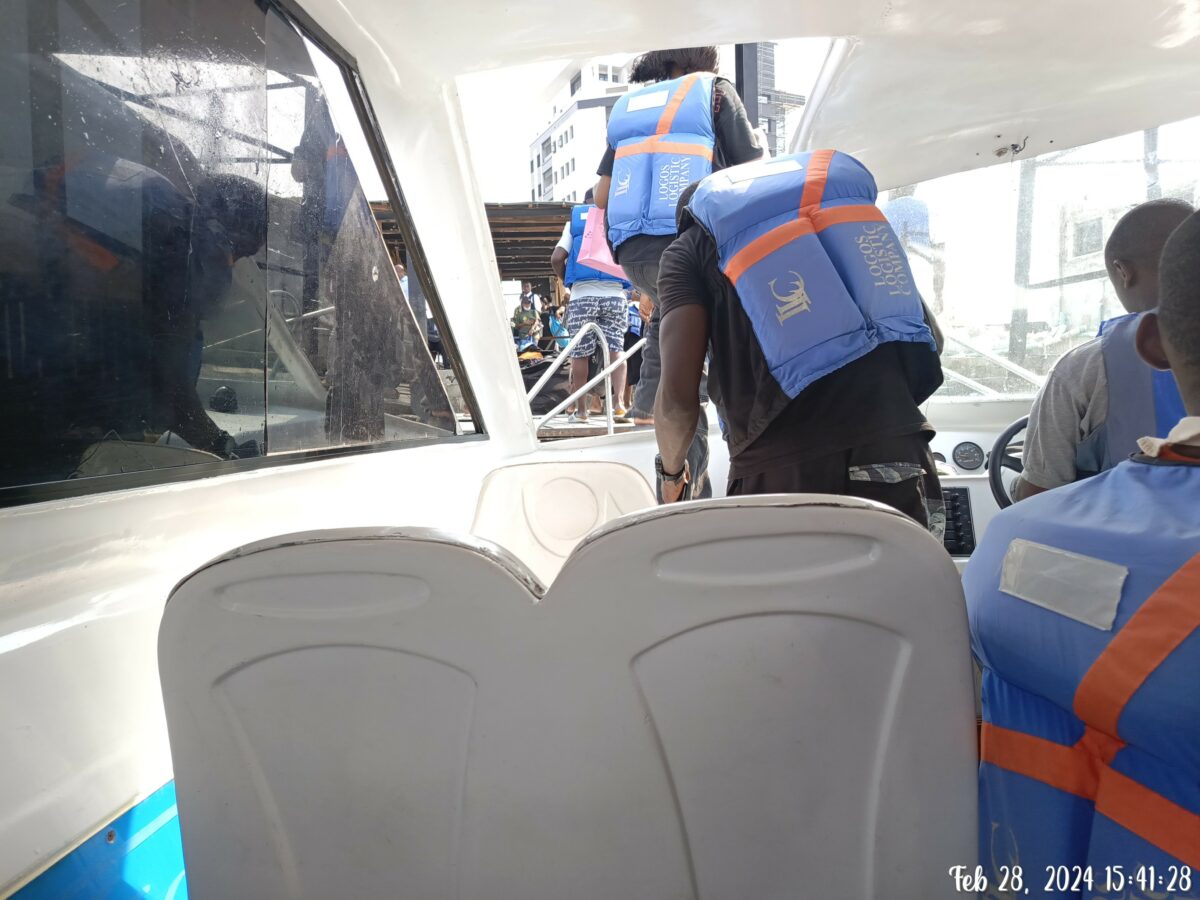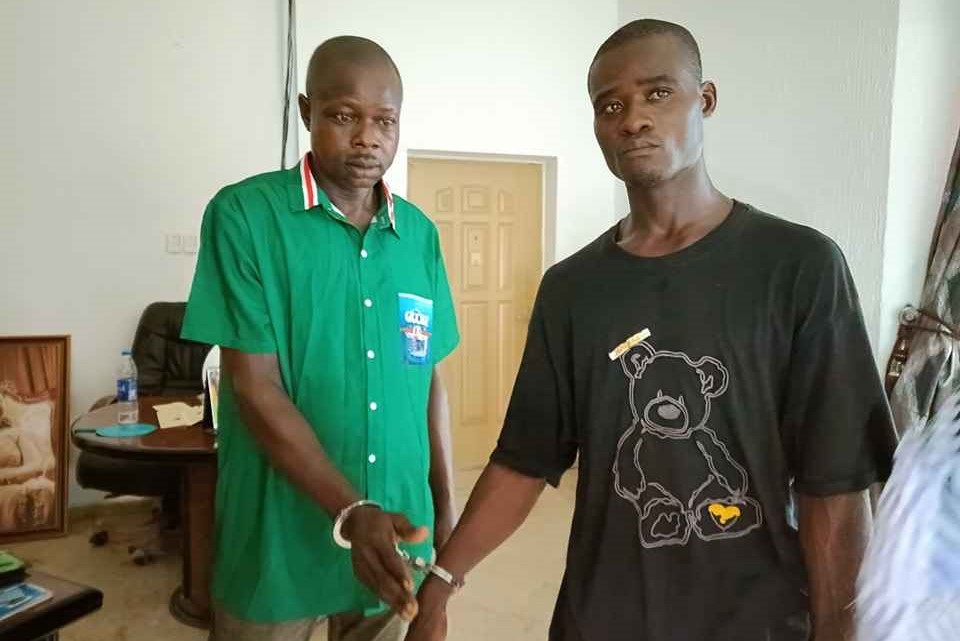Coal was first discovered in Nigeria in 1909 in Udi, Enugu, southeastern Nigeria. The Ogbete mine, the country’s first coal mine, was opened six years later.
When the Nigerian Coal Corporation (NCC) was later formed in 1950, mining operations started in Ogbete and other major coal mines across the country.
For much of the 20th century, coal was one of Nigeria’s primary exports. However, significant changes in the Nigerian energy market later led to an increased utilisation of petroleum as a fuel source.
The coal mining industry further suffered neglect when the civil war began in 1967. The emergence of the Nigerian Enterprise Promotion Decree in 1972 did not also help matters as foreign experts and mining companies were forced to leave Nigeria after transferring business ownership to Nigerians.
READ ALSO: INVESTIGATION: Farmer-Herder Clashes in Nasarawa Through the Eyes of the Victims
The NCC eventually went bankrupt in 2002, leaving many of the coal mines abandoned and without proper closure.
Despite the high rate of neglect, Nigeria still has many coal reserves. Production has, however, dwindled in the last 20 years, with mining rate hitting a record low of 40,000 metric tonnes in 2012.
ENUGU’S CHARRED PAST HURTING ITS PRESENT
A once-forested valley sits silent as a graveyard. The scars left by heavy machinery on the swaths of forest are still evident, with chunks of coal waste littering the ground.
Once seething like a beehive, the now abandoned Onyeama Coal Mine in the south-eastern Nigerian city of Enugu has become a shadow of itself.
The coal mine was one of Nigeria’s derelict coal fields that was closed in 2002 when the NCC went bankrupt. Now, the area has been converted to a farmland.
But the land is not fertile.
Sunday Okeke, a farmer, walks along one of the narrow paths into the mine looking very upset. The maize he recently planted had initially sprouted into healthy green stalks before wilting away in a flash.
Unemployed and with dim prospects of getting a job, Okeke and some residents of Onyeama, who once worked in the now abandoned mine, resorted to farming after losing their mining jobs to feed their families. Their decision to resort to farming has not also been favourable as they rarely make profit from it.
“The land is not very fertile. I only plant vegetables and some crops that are not deep-rooted, because they do not require as much nutrients and fertilizers,” he says.
“I tried planting maize and I am disappointed at the outcome.”
Many farmers in the area are unaware that the mining activities in their community years ago removed the topsoil, which contains much of the moisture and nutrients that crops need.
These days, the farmers spend highly on the purchase of fertilizers and this reduces their profit.
The Onyeama Coal Mine has also polluted the water used for domestic chores and farming in the area. The local water sources got polluted over time with bright-orange runoffs from tunnels at the abandoned mine.
COMMUNITIES ACROSS NIGERIA FACE DANGER AND POLLUTION FROM ABANDONED MINES
As of 2017, Nigeria had an estimated 1,200 identified abandoned mining sites, where mining activities ceased without proper closure or reclamation. The sites have also continued to degrade their environment, posing physical dangers in the form of weakened and collapsing mine shafts, sinkholes, and water-filled pits.
The 2007 Nigerian Minerals and Mining Act, requires “progressive reclamation” activities carried out simultaneously with mining operation in newly approved industrial mining projects.
The act also calls for mining companies to establish a reserve fund for environmental protection, mine rehabilitation, reclamation, and closure costs.
Although most of the now abandoned mines in Nigeria, including the one in Enugu, predate the 2007 legislation, there have been few material changes in practice since the act was passed.
Section 30 of the Act stresses that, “a tax deductible reserve for environmental protection, mine rehabilitation, reclamation and mine closure costs shall be established by companies engaged in the exploitation of mineral resources.”
Reclamation includes filling depressions or hollows with soil or rock removed during excavation and planting trees to stabilise and restore mined area. Best practices also include repairing wildlife habitat; removing office buildings, processing facilities, and transportation equipment; and sealing mine shafts and other openings.
In Akwuke community, Enugu South Local Government Area (LGA), Enugu state, close to Okpara mine is a complete collapse of mining infrastructure, years after mining activities had taken place. The mining site was abandoned by the operators without efforts to address impacts on the community, residents alleged.
“With the exception of those who were employed when the coal mine was still active, there is no tangible benefit our community has gained from mining,” says Sunday Nsude, a community youth community leader in the area.
While commenting on the situation of things, Nsude pointed to at an untarred road that had, over the years, deteriorated due to flooding and poor maintenance.
Simon Ude, another resident in the area, once worked as a security guard at the mine from 1996 and 2006. He said he got laid off with no severance pay when the mine got shut down.
“I was not compensated during the period and I was not the only one in this category. I had a friend who spent nine years and nine months with the mining company. He was also laid off without pay,” Ude says.
However, the Nigerian labour laws require compensation for laid-off employees based on the length of their employment.
“I had to restart my live from scratch. I started firewood business, but the income is not sufficient to take care of my family needs,” says Ude with a tinge of regret in his voice.
Since the mines in Onyeama, Iva Valley, Ribadu, Okpara and Ogbete (in Enugu) were abandoned, locals have had to contend with varying degrees of environmental and physical hazards.
Mike Achio, who once worked in the Onyeama Coal Mine and now heads a community-led security team, says that abandoned mine is now a hideout for criminals.
“We regularly contend with criminal elements who have mastered the art of coming into the community to inflict pain on residents and escape through the abandoned mine,” Achio says.
“Recently, we arrested some people at night peddling hard drugs, including cocaine and heroin, in the community.”
Achio also pointed out that respiratory diseases, including pneumoconiosis, commonly known as black lung disease, have been contracted by a handful of former miners, who also happen to be inhabitants of the area, due to long-term exposure to airborne coal dust.
“Although I am lucky and have no issues with my health, many of my colleagues are not,” says Achio.
“They are battling with different health problems such as chest pains and breathing problems. The majority of them were left to bear the consequences of long years of working at the mine without any help.”
Onwubere Basden Jones, a medical expert, who specialises in cardiovascular and congestive heart diseases, says that elderly people in mining communities are likely to have co-morbidities associated with mining.
READ ALSO: ANALYSIS: Voting Patterns in 2019, 2023 Presidential Elections
“Years back when mining was still actively going on in these communities, there was an upsurge in the number of patients seeking medical attention for different diseases, including respiratory diseases,” Onwubere says.
A CITY ON THE VERGE OF COLLAPSE
Communities along the mining corridors of Enugu State are also facing a range of environmental challenges, including flooding, landslides and significant erosion.
Recently, residents of Enugu-Ngwo, Amuzam, Agbaja Ngwo, and Nsude said that houses and properties have been washed away by gully erosion caused by heavy rains and landslides.
Despite these challenges, little research has been conducted on the impact of these abandoned mines on the environment.
“A lot of people do not really know the extent of the damage mining did to Enugu,” says Chinedu Nwafor, executive director of the Africa for Africa Initiative.
He adds a warning that the city of Enugu is sitting on a ticking bomb.
“If nothing is done, Enugu might collapse. I don’t know why the government is yet to see this as an emergency,” Nwafor says.
“In particular, the network of underground mining tunnels in Enugu is poorly mapped so no one knows their full extent or how it may be exacerbating flooding and erosion issues.
“The local media have reported that the area is at risk of cave-ins. In the city, sometimes, you will notice a lot of earth movements and the land will collapse inward. This shows that that place is empty below.”
Local sources including former miners estimate that the underground tunnels from Onyeama and Ribadu mines lead to Nsude, which is about 18 miles long, and Abor, which is about 12 miles long.
LACK OF GOVERNMENT ACTION
State and federal officials have, on several occasions, paid lip service to the impacts of abandoned mines on human health and the environment. They have also made little effort to address them.
Ayodeji Adeyemi, a special adviser to the Minister of Mines and Steel Development, did not respond to requests for comment on the matter, despite promising on several occasions to forward queries to the appropriate desk and provide a response.
Senator Ike Ekweremadu, the chairman of the Senate Committee on Environment and one of the three senators representing Enugu State in the National Assembly, did not respond to multiple emails.
Uche Anuchukwu, his personal assistant, once acknowledged receipt of the inquiries made, but never gave a detailed response.
Chijioke Edeoga, Enugu State Environment and Mineral Resources Commissioner, denied knowledge of any challenges posed by abandoned mines in his state.
READ ALSO: Sacrifices of Legs and Souls: How Forgotten Nassarawa Community Roads Wreak Havoc
He held that his office had never received any official complaint on the matter.
“I am not aware. There is no official complaint from these communities to my office. The state government cannot be blamed, as the mining sector is under the Federal Government,” says Edeoga.
“They (the federal government) should be the one to put things in order.”
The federal government is undertaking some interventions to mitigate the impacts of abandoned mines in Enugu State as part of the Nigeria Erosion and Watershed Management Project (NEWMAP), but experts say that an expansive and thorough environmental audit needs to be conducted across the entire mining corridor in Enugu to inform strategies for long-term, sustainable solutions.
“Any palliative or reclamation done without a comprehensive environmental audit to ascertain the level of devastation and the funding required to remedy it is unlikely to be a sustainable solution,” says Nwafor.
“It is superficial and amounts to poor utilization of funds.”
Residents consider government’s efforts to be merely cosmetic. A resident of Enugu- Ngwo, who identified himself as Chinedu, acknowledged the efforts made by the government but said more funding and commitment are needed given the number of affected sites.
NIGERIA’S SMALL SCALE MINES LEAVE A LEGACY OF RUIN IN EBONYI, ENUGU, PLATEAU, NASARAWA AND OTHERS
Nigeria has many artisanal and small-scale mines that provide a livelihood for thousands of people. This category of people mine gold, gemstones, and cassiterite (a tin oxide mineral) in small quantities.
This segment of the extractives industry employs an estimated 400,000 and 500,000 people and currently accounts for more than 90 per cent of solid mineral extraction in the country.
This activity, is however, poorly regulated by the government. Most of these miners operate outside the formal regulatory regime, without licenses or permits.
As a result, communities close to these activities suffer from environmental degradation and negative health consequences. These mine sites are rarely properly closed or remediated, creating hazards for communities long after miners have moved on.
In Ebonyi State, the landscape is punctuated with pockets of abandoned mining pits. Two kids while away time in one of them near the town of Ihotor-Ameka, singing as they run in circles and then collapse on a heap on the muddy soil, giggling.
Okeh Gloria, a resident, recalls the day in 2019 when her third child, 2-year-old Sylvanus, was in pain and fighting for his life. His eyes had rolled back in his head, his mouth closed. His muscles tightened and he struggled to breathe. Gloria and her husband were distraught.
Jittery, Gloria squeezed his jaws open and poured palm oil down his throat. She had seen many others in the community use this remedy and thought it might help. But Sylvanus’s condition worsened.
“I cried and prayed when I saw him convulsing. I could not believe what I was seeing,” says Okeh.
She said Sylvanus was later rushed to hospital, where he stayed for six days before he regained consciousness and began his journey to recovery. The family had to pay N50,000 for his treatment.
READ ALSO: In Nassarawa, Police Arrest Man Specialised in Production, Sale of Fake Documents
Okeh and her husband later suspected heavy metal poisoning as the cause of their child’s sickness.
Ihotor-Ameka has huge deposits of minerals, notably lead and zinc, and is littered with mining pits from both abandoned and active artisanal and small-scale mines.
When the pits are flooded after heavy rains, the miners pump the water into the surrounding environment, including rivers and streams. The risk of water and soil pollution with heavy metals is high.
“Although we could not explain it, we knew the reason for his ailment cannot be dissociated from our environment,” Okeh says.
Several weeks after her son became sick, other residents began to show similar symptoms.
“My neighbour’s son was sick and convulsing,” she says. “Two days later, he died. He was only 3 years old.”
Water samples collected from the area and tested at the Institute for Agricultural Research and the National Research Institute for Chemical Technology (NARICT), both in Zaria, kaduna State, had lead (Pb) concentration of nearly 408 parts per million (ppm); for reference, a U.S Environmental Protection Agency (EPA) rule requires systems to monitor drinking water if lead concentrations exceed 0.015ppm.
Heavy metals can harm the body even in small doses. Lead exposure can be especially dangerous to children, causing damage to the brain and nervous system.
It also causes stunted growth and development, behavioural and learning challenges, and hearing and speech defects.
Seizures and convulsions are also among the more severe neurological symptoms associated with lead overexposure.
Diagnostic capacity is a challenge in Nigeria, and this includes testing for heavy metal poisoning. People come down with strange illnesses that are often left undiagnosed, even after evaluations by experienced physicians.
However, this is not news. In 2010, the World Health Organization (WHO) reported several incidences of convulsion and death in young children due to lead poisoning in five mining villages in Zamfara State. The number of affected children has continued to grow.
Many blame this development on the informal and unregulated activities of artisanal and small-scale miners (ASM) who make up 85 per cent of miners in Nigeria’s extractive industry, according to the National Bureau of Statistics (NBS).
Artisanal and small-scale mining actually differs from medium and large-scale mining. This because there is limited available information on production, revenues, operations, and location of their activities.
“The havoc that these artisanal and small-scale miners cause is often overlooked because they don’t necessarily carry heavy machinery to the site,” says David Bade, a farmer whose land is threatened by abandoned mining pits in Yelwa community, Kokona LGA, Nasarawa State.
“They came in droves, took over our farmlands and started digging for tourmaline, a gemstone. Several months later, they vacated the site and moved elsewhere.”
Bade says he has noticed a sharp decrease in his harvest because his farmland is no longer fertile. As lead deposits are common in the area, it is also possible that the miners may have kicked up lead-contaminated soil and dust in their search for gemstones.
“Before, I used to harvest up to 300 bags of maize. Now, I rarely get up to half of that. I have also been attacked by snakes and other reptiles that hide in the holes. I have lost two of my dogs to snake attacks.”
Ibrahim Yahaya, an official of Nasarawa State Ministry of Environment and Natural Resources, says mining comes with many hazards.
“Mining can severely alter the soil and reduce its fertility. When miners dig into the earth for these minerals, they inadvertently dump the excavated materials on the topsoil. This is called over-burden and it makes it more difficult for crops to access nutrients,” Yahaya says.
Soil samples collected from Bade’s farmland and tested at the Institute for Agricultural Research and the National Research Institute for Chemical Technology showed levels of metals that are poisonous to plants, including 1,350 ppm of copper.
According to the U.S EPA, normal soil should only have a copper content of 1 to 200 ppm. The concentration of zinc in the soil was 2,090 ppm, also much higher than normal levels.
The concentration of lead was 1,560 ppm; the EPA recommends avoiding growing vegetables in soil with lead concentrations of more than 400 ppm.
HOW LARGE COMPANIES ENABLE INFORMAL MINING
Artisanal and small-scale miners operate as part of a broader mining ecosystem in Nigeria. With limited access to capital, they are often financed by sponsoring companies that take a large cut of their profits.
The sponsors have mastered the art of profiteering from Nigeria’s weak mining regulations and enforcement. In the states visited, the number of artisanal and small-scale miners continues to grow due to the availability of a ready buyer.
READ ALSO: WSCIJ Trains 12 Female Reporters on Leadership in Media
Some larger mining companies have reportedly given artisanal miners access to concessions that they are not actively mining. A Nigerian Extractive Industries Transparency Initiative (NEITI) audit report covering activities in the extractive sector from 2007 to 2010 found that only 30 per cent of the companies holding mining titles were engaged in active quarrying, mining, and exploration.
In Ebonyi State, most big mining companies, with or without licenses, give mining site access to artisanal miners, who are often members of the local community.
The company pays negotiated fee to the landowner and local authorities but retains exclusive rights to the mined commodity. One source noted that many of these companies are of Chinese origin.
“They send scouts to the community to negotiate with individual landowners who believe they have mineral resources underneath their properties. Afterwards, they agree on fees to be paid to the landowner and local authorities in the area, often the traditional heads,” says Chikezie, a miner in Ameka, Ebonyi State.
The government has, over the years, signalled intentions to formalise the sector, improve revenue collection, and increase the contribution of solid minerals to the country’s gross domestic product (GDP).
However, progress in terms of actualising the plan, has been slow and uneven. The plan has also been truncated by a lack of geological information and limited government capacity.
Mine closure and remediation do not appear to have featured prominently in discussion about formalisation.
A small-scale granite miner in Umuogharu, Ezza North Local Government Area of Ebonyi State, who asked not to be named, said the state government is aware of their informal mining activities.
“We pay the necessary levies and go about our activities,” she says, adding that discussions on abandoned mines and proper mining site closure were rare in their interactions with the state government.
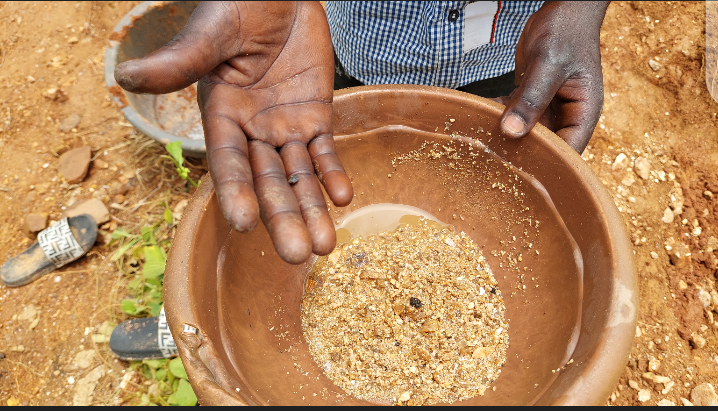
An Artisanal Mining Site in Wamba, Nasarawa State. Photo Credit: Nelson Owoicho
In Wamba community, Nasarawa State, large mining corporations and the locals agreed on a sharing formula for the proceeds from mining activities.
One of the locals, Kasim Usman said, “When they (the mining company) came in 2019, we agreed that a certain percentage of the mineral resources mined would be given to the community. One-third is paid to the local government as royalty, one-third is paid to the owner of the land where the resources were mined, and one-third is paid to the community.”
Neither the mining companies nor the artisanal miners take responsibility for the proper closure and reclamation of mining sites. They simply move on to another location. The exploitative behaviour of these large scale companies is often the root cause of community corruption and violence, and it results in a huge loss of revenue to the government.
In hindsight, poor revenue from the sector make budgetary allocations and funding for reclamation of abandoned mines difficult for the government.
LIVES LOST, LIVELIHOODS AFFECTED IN PLATEAU, NASARAWA, OTHERS
In Plateau state, years of complaints by the inhabitants of communities, where mining take place, about the wreckage caused by abandoned mining pits have fallen on deaf ears.
Belied by its beautiful scenery, abandoned mining pits in Jos, the state capital, have become potential death traps for residents of the area.
Tin was discovered in Jos plateau at the turn of the 20th century and colonial mining began soon thereafter.
These tin mines were largely abandoned, following the 1972 nationalisation policy, which broke the monopoly of foreign interests, particularly of British firms.
Decades later, tin mining communities are still struggling with the negative effects of mining on human health and the environment.
Today, informal artisanal and small-scale miners operating on meagre profit margins work in these abandoned mines. This carries a unique set of risks and dangers.
In December 2019, an inactive mining pit in Zawan community, Jos South LGA, collapsed, killing six people who were illegally prospecting for tin and other minerals. Eyewitnesses said that more than 50 people were in the pit before it collapsed.
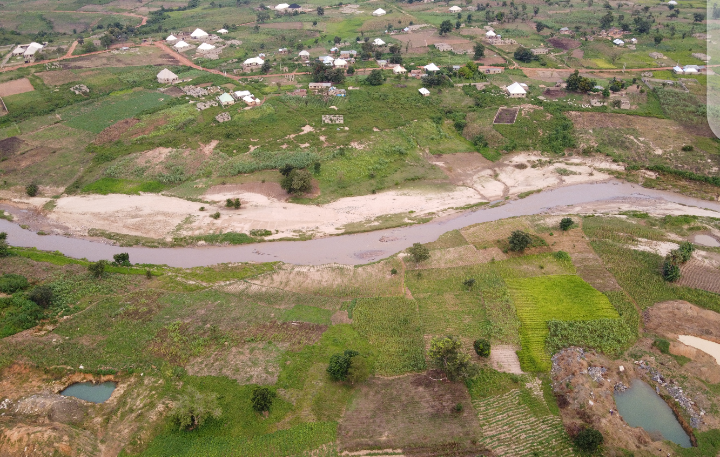
Abandoned Mining Pits in Sabon-Barki, Plateau State. Photo Credit: Nelson Owoicho
In Sabon-Barki, Jos South LGA, residents are fearful when it rains because abandoned mining sites channel floodwaters. In April 2021, a 4-year-old girl was swept away after a heavy downpour.
“She was returning from school alongside her brother when the flood carried her from Dadin Kowa to Muchogopyeng,” says Belinda Yusuf, a resident of the area.
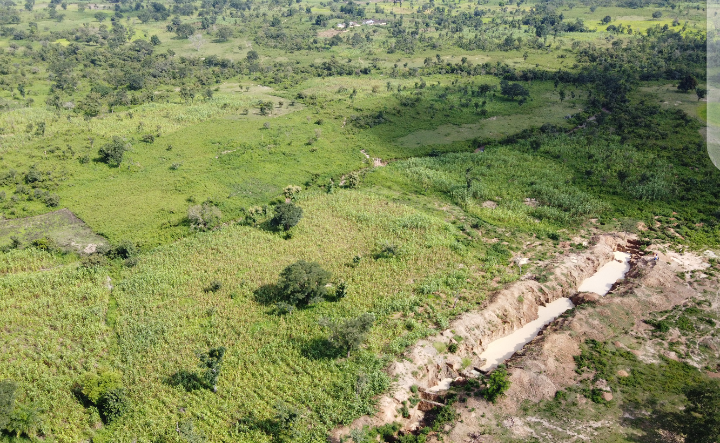
Abandoned Silver Mining Pits in Keffi, Nasarawa State. Photo Credit: Nelson Owoicho
In Keffi, Nasarawa state, the Five-Star Mining Company allegedly vacated its mining project without reclamation after an outcry by residents of the area over incessant blasting of rocks. The abandoned site sits behind Keffi Secondary School.
“Each time they blasted the rocks, strong vibrations reverberated throughout the entire area,” says local resident, Garakuwa Zubairu.
“Our buildings began to crack from the foundation.”
He said residents complained to the company and asked them to reduce the blasting activity, but it did not.
READ ALSO: INVESTIGATION: How Local Politicians Mobilise Underage Almajiri Voters in Kaduna
The company maintained that it was licensed by the federal government to carry out its activities. The inhabitants later lodged a complaint to state government officials, who later visited the site and directed the company to stop work. The company then vacated the site without doing reclamation work.
Checks at the Corporate Affairs Commission (CAC), showed that the company is inactive and was incorporated on January 6, 1993. The company is headquartered in Calabar with Janet Okok, Effiong Effiong, George Effiong, and Nkoyo Effiong as its directors.
SLOW PROGRESS OF RECLAMATION
Government remediation efforts dates back to 1955, when the federal government reclaimed abandoned mining sites managed by the Northern Regional Government at the time. Reclamation of several other abandoned sites followed in 1980.
In 2017, the Ministry of Mines and Steel Development (MMSD), which oversees the solid minerals subsector in Nigeria, said it would spend N1.67tr to reclaim more than 1,600 abandoned mine sites across the country.
A total of 32 mining sites were reclaimed between 2007 and 2019 at a cost of N2.39 billion naira, or about N75 million per mine – less than the amount originally projected. In 2014, a ministry official named Salim Adebgoyega, had put the reclamation cost per abandoned mine at N80m to N100m, depending on the size of the site.
Progress has been much slower than expected. The ministry initially projected that 100 sites would be reclaimed annually between 2007 and 2020.
An inventory of abandoned mines and quarries commissioned by the ministry in 2017 to evaluate the environmental and social risks associated with past mining activities is yet to be released officially.
The Environmental Protection and Rehabilitation Fund (EPRF) called for in the 2007 Nigeria Mining Act is not fully operational.
The ministry did not respond to a Freedom of Information Act (FOIA) request submitted on September 29, 2021, asking for specific details about progress on mine remediation and closure, including a list of all abandoned mining sites identified by the ministry, reclaimed abandoned mining sites, the cost of the reclamation of the sites, and the status of the EPRF.
The ministry acknowledged receipt of the request and asked for ample time to compile the required information, adding that the process of revalidating abandoned mines and quarries was ongoing.
The federal government has allocated significant funds to the reclamation of abandoned mines but has achieved little in terms of value for money.
Analysis of the ministry’s budget showed that at least N2.43 billion was spent on activities related to reclamation between 2015 and 2020. A further breakdown revealed that N1.90 billion was budgeted for actual reclamation of an unspecified number of abandoned mines during the same period.
In 2018 and 2019, the government spent N78.3 million on revalidating abandoned mining sites nationwide and a whooping N463 million on logistics support for a special mines’ surveillance task force in 2020.

An Abandoned Mining Site in Barkin Ladi, Plateau State. Photo Credit: Nelson Owoicho
One of the reclaimed sites in Barkin Ladi, Plateau state, is still prone to flooding and ecological problems years after the purported reclamation in 2017.
Residents who spoke with this newspaper were critical of the work done.
“We cannot farm on these sites. The land is not fertile. No bioremediation was carried out,” says Dafum Chung, a resident.
“They just came to sand-fill the site and went away. Although the gully erosion subsided, the problem of flooding is still persistent.
READ ALSO: SPOTLIGHT: Hadiza Balarabe, el-Rufai’s Deputy Who Remains in Office
“I used to farm close to my house until flooding and erosion caused by mining destroyed my farmland. Although I have relocated to another area to continue my farming, my friends who still farm there are always complaining of poor harvest.”
The Ministry of Mines and Steel Development acknowledged receipt of a FOIA request for procurement records, including budgetary allocations and lists of contractors engaged but request had not been fulfilled as at press time.
CAN COMMUNITIES SUE?
Nigeria has a federal system of governance with the states having limited powers. Mining is on the exclusive legislation list – a list of issues over which the federal government has exclusive legislative powers.
This means states cannot advance their own legislation governing mining-related issues, including mine closure, thus, state governments cannot enforce federal legislation.
“You really cannot blame the state governments,” says Abiodun Baiyewu, Country Director, Global Rights.
“The federal government is quick to remind you that the benefits of the minerals primarily belong to the commonwealth at the federal level. It was not until 2017 that benefits started to trickle down to the local communities.
“Even so, the benefits have been negligible because the government still earns so little from solid minerals due to massive haemorrhages in revenue.”
However, one potential avenue for states to regulate their mining sectors remains unexplored.
Section 19 of the Mineral and Mining Act of 2007 provides for a state-level governance apparatus for mining, known as Mineral Resources and Environmental Committee (MIREMCO). To date, this apparatus is yet to be fully explored.
Communities that have been negatively impacted by abandoned mines have limited avenues for recourse, including through national legal systems.
Chinedu Bassey, a program manager at the Civil Society Legislative Advocacy Centre, argues that several international human rights instruments to which Nigeria is a signatory, are yet to be properly legislated in the country.
These include the UN Guiding Principles on Business and Human Rights (UNGPs).
10 years after endorsing them, Nigeria is yet to develop a national action plan to implement the principles, which allow aggrieved communities to seek redress in court.
According to Hamzat Lawal, chief executive of Connected Development (CODE), a nongovernmental organisation that works to empower marginalised communities in Nigeria, the real question is whether the Nigerian justice system is reliable.
“If we’re being realistic, these communities do not have the resources to pursue a case against the government, and while that reflects the weakness of our judicial institution, it also shows the extent of failure of leadership in the country,” says Lawal.
Regardless of the challenges, Inibehe Effiong, human rights lawyer and activist, believes that mining communities can sue the government or businesses if they can provide evidence and proof beyond a reasonable doubt of their culpability.
Effiong is right. There are quite a few justiciable clauses to rely upon. Beyond the Mineral and Mining Act of 2007, Section 17 (2d) of Nigeria’s constitution states that a community’s natural resources must not be exploited except for the good of the community.
Some international avenues are also available, particularly if a multinational mining company has violated the rights of communities through inadequate mine closure.
For instance, communities could file a grievance with the National Contact Points (NCPs) that are responsible business conduct in the company’s home country or they could request a UN Special Rapporteur investigation.
However, these avenues are rarely explored, due to lack of information and low literacy levels amongst residents of these communities.
Communities can only seek redress if they are aware of their rights and are empowered with the information they need to demand justice, accountability and transparency from government entities and other stakeholders in the extractive industries.
READ ALSO: SPOTLIGHT: Hyacinth Alia, the Miracle-Working Priest Who Will Be Governor
“For this to happen, knowledge and participatory dialogue platforms are important,” says Baiyewu.
“Let’s start with providing a basic knowledge of what mining entails, the likely impacts, and the rights of mining host communities. Mining host communities need to access information on how to air their grievances, and ensure ease of access to the relevant agencies of government.”
Lawal has a similar view.
“Rather than sue the government, leaders of mining communities would do better to learn how to engage the government as partners.” says Lawal.
“It’s the first step in the right direction, and it disarms a government that is quick to defend itself against its own citizens.”
This report was supported by Result for Development (R4D) under its Leveraging Transparency to Reduce Corruption (LTRC) project.
Olajide Adelana is an investigative writer and editor who is passionate about advancing accountability and transparency in the service of social justice. He recently served as a field communications officer for the United Nations Office for Project Services, where he focused on water supply and sanitation issues.
Subscribe
Be the first to receive special investigative reports and features in your inbox.


